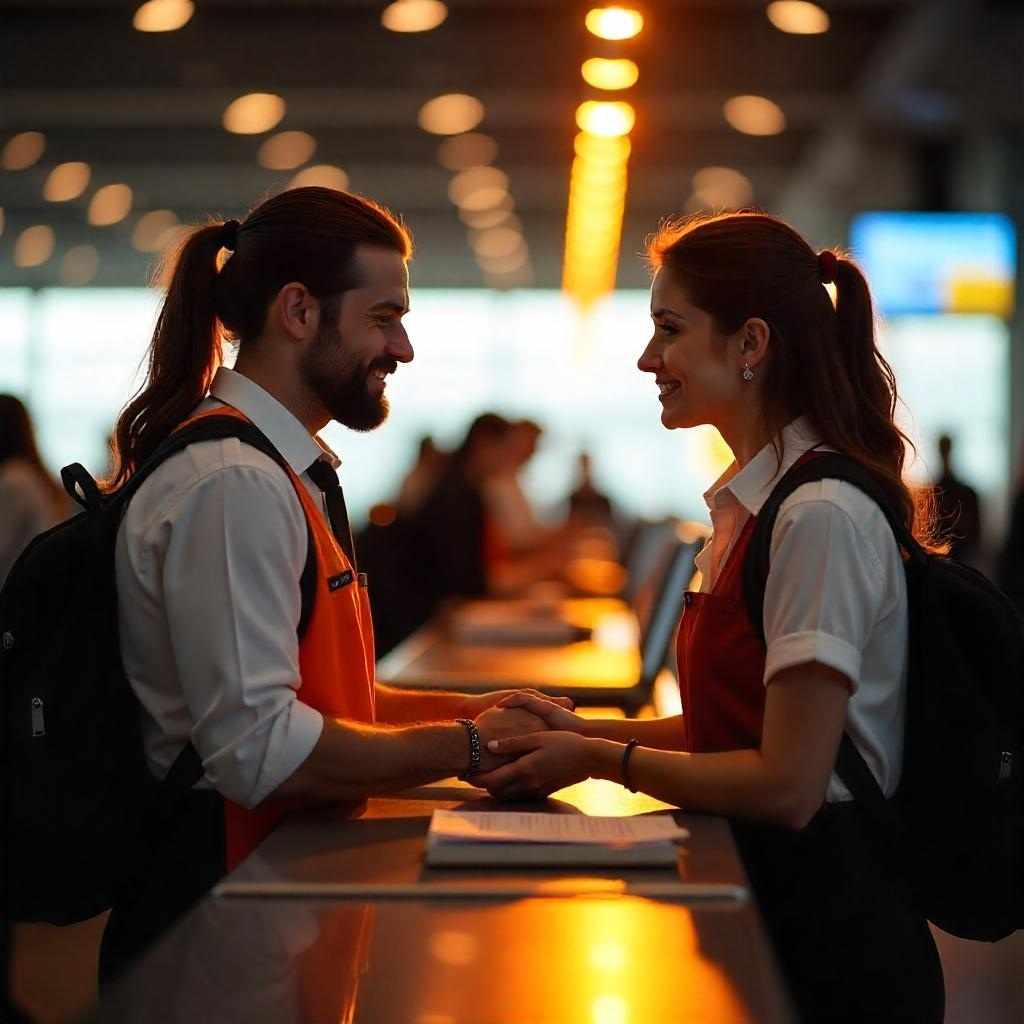Traveling with connecting flights can add an extra layer of complexity to your journey, especially when it comes to baggage regulations. Whether you’re switching between two domestic flights or making an international connection, understanding how baggage works during layovers can help you avoid stress and unexpected fees. In this blog, we’ll explore baggage regulations for connecting flights, how to handle personal items on a flight, and tips for ensuring a smooth transition between flights.
What Happens to Your Baggage on Connecting Flights?
When you book a flight with one or more layovers, your baggage may be handled differently depending on the airline, your itinerary, and the length of the connection. Here’s an overview of the baggage process during connecting flights:
1. Baggage Transferred Automatically
In many cases, especially on single-ticket itineraries with the same airline or partner airlines, your checked luggage will be transferred automatically to your connecting flight. You won’t need to pick it up during your layover unless it’s an international flight or you’re switching between non-partner carriers.
2. When You Need to Claim Your Baggage
If you have a long layover, are connecting between different airlines that don’t share a partnership, or are traveling internationally, you may need to collect your checked baggage at baggage claim during the layover.
International Flights: If your first leg of the trip is international and your connection is domestic, you’ll usually need to pick up your checked baggage to go through customs and immigration. Once you’ve cleared customs, you can drop your baggage off again for your next flight.
Carry-On Bags and Personal Items on Connecting Flights
Carry-on luggage and personal items on a flight are often less complicated to manage during connecting flights because they stay with you in the cabin. However, there are still important things to keep in mind:
1. Carry-On Baggage on Connecting Flights
If you’re traveling with carry-on baggage, you’ll keep it with you throughout your journey. It should be stored in the overhead compartment or under your seat. Even though your carry-on remains with you, you’ll still need to adhere to the baggage restrictions of each airline, especially if you have multiple carriers on your connecting flights.
Size and Weight Restrictions: Ensure that your carry-on bag meets the size and weight limits of each airline involved in your journey. Even if your carry-on bag is accepted on the first flight, it might not be allowed on the connecting airline if their baggage policies are stricter.
2. Personal Items on a Flight
Personal items such as handbags, backpacks, laptop bags, or small totes can usually accompany you on your journey, and they are allowed on both the first and connecting flights. These personal items on a flight must fit under the seat in front of you and should not exceed the specified dimensions for personal items, which are typically 18 x 14 x 8 inches (45 x 35 x 20 cm).
Even with connecting flights, you are allowed to keep your personal items on a flight for the duration of your trip. Just make sure your personal item is organized and doesn’t overflow into the overhead compartment, as this could cause inconvenience during transitions.
Handling Baggage Between Connecting Flights
While your carry-on and personal items on a flight will be with you throughout your journey, checked baggage can sometimes require extra attention. Here’s what to do in different scenarios:
1. Same Airline or Partner Airlines
If you’re flying with the same airline or partner airlines (such as within an alliance like Star Alliance or SkyTeam), your checked baggage will typically be transferred automatically between flights. You won’t need to collect it during the layover, and it will be sent to your final destination.
What to Check: Always confirm with the airline at check-in that your baggage is tagged all the way through to your final destination. If you have any concerns, ask about the process for baggage transfer during your layover.
2. Different Airlines with Separate Tickets
If your connecting flight involves different airlines that do not have a partnership, you may need to claim and re-check your luggage during the layover.
Time Between Flights: Make sure you have enough time between flights to claim your luggage, clear security, and check it back in. Airlines typically recommend at least 2 hours for domestic connections and 3 hours for international connections to ensure you have enough time for the process.
3. International and Domestic Connections
When you’re traveling internationally and connecting to a domestic flight, you’ll almost always need to collect your checked baggage to go through customs and immigration. Once you clear customs, you’ll drop your bag off again at a designated area for your next flight.
Customs and Security: Ensure you have enough time to go through customs and security before boarding your connecting flight. It’s also essential to check with your airline to see if your baggage needs to be re-checked after customs.
Important Tips for Baggage During Connecting Flights
Navigating baggage during connecting flights can be tricky, but a little preparation can help ensure a seamless transition. Here are some helpful tips:
1. Know Your Baggage Allowance
Each airline has its own baggage policies, so review them before booking your ticket. This includes checking the baggage limits for both carry-on bags and checked luggage.
Remember, if you’re flying on multiple airlines, you’ll need to check the baggage policies for each one, as each airline might have different rules for size, weight, and fees.
2. Allow Plenty of Time Between Flights
Allow enough time to make your connection, especially if you need to claim your baggage and re-check it. In general, 2 to 3 hours is recommended for domestic connections, and 3 to 4 hours for international connections.
3. Pack Essentials in Your Personal Item
Since personal items on a flight stay with you throughout the journey, make sure to pack your essentials—such as your passport, medications, travel documents, electronics, and snacks—in your personal item. This way, if there are any delays with your checked luggage, you’ll still have everything you need.
4. Monitor Flight Changes
Keep an eye on your connecting flight for any changes to its schedule or gate. Sometimes delays or gate changes can affect how you manage your baggage. Use apps or check the airline’s website for real-time updates.
5. Check the Baggage Tag
Ensure that your checked baggage is tagged correctly with your final destination. If you have a connecting flight with a different airline, ask if your bag will be transferred automatically or if you need to collect it.
Final Thoughts on Baggage Regulations for Connecting Flights
Baggage regulations for connecting flights can vary depending on the airlines, the length of your layover, and whether you’re traveling internationally or domestically. The key to managing baggage during your journey is to stay organized, know the airline’s policies, and plan for your personal items on a flight and carry-on luggage accordingly.
By understanding how baggage works for connecting flights and preparing for different scenarios, you can minimize stress and ensure a smooth travel experience. Whether you're making a quick domestic connection or a longer international layover, a little research and preparation will help keep everything in order.












Write a comment ...